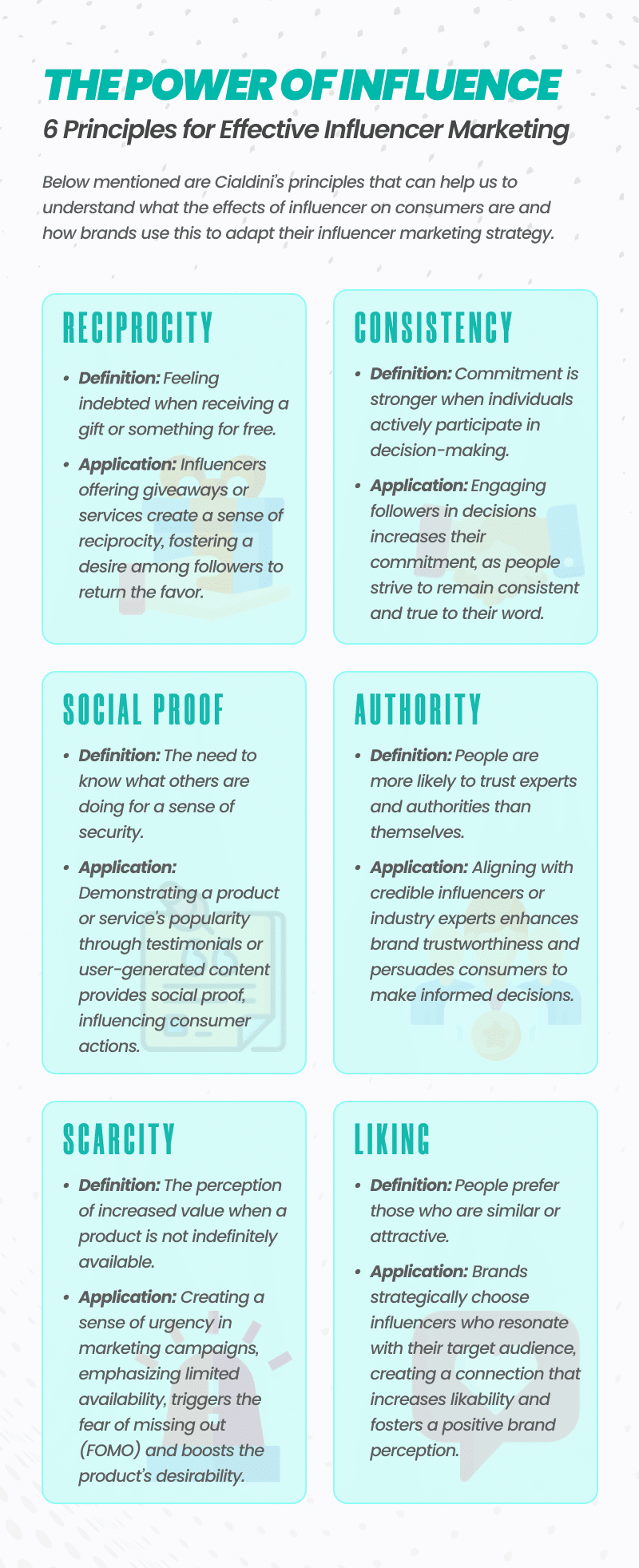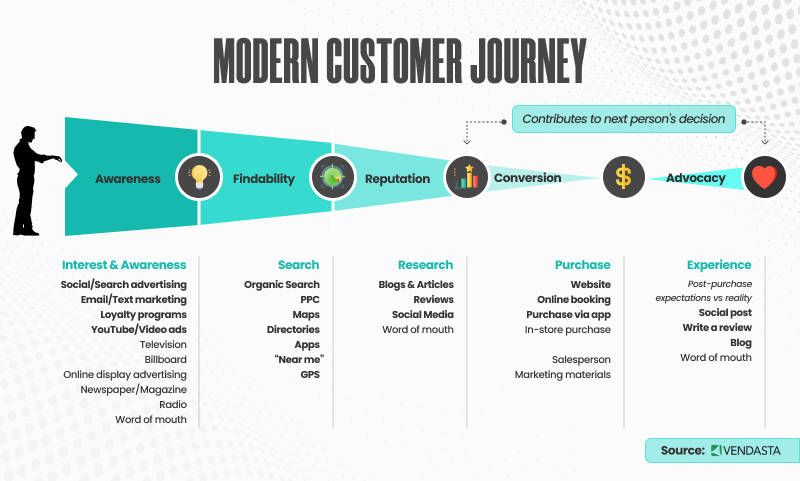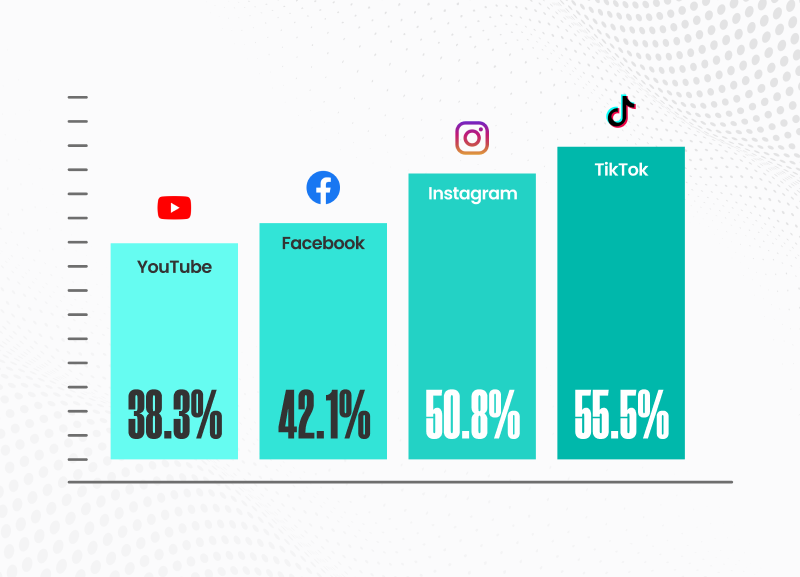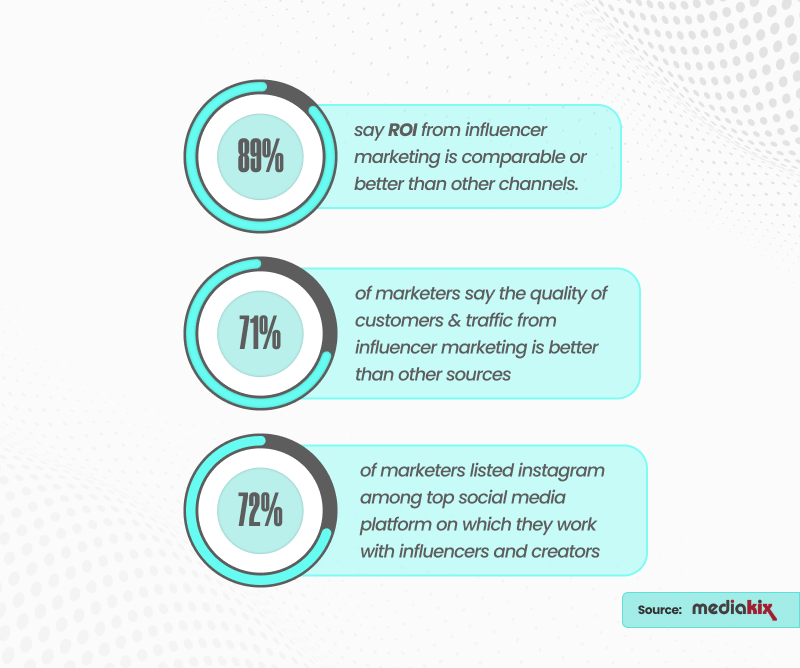How Influencer Marketing Has Changed Consumers’ Decision-Making
28th January, 2001
A cozy Sunday afternoon, the fragrance of curry wafting from kitchen windows, and my mom was engaged in what seemed like an eternal debate – which detergent brand delivers the cleanest clothes. Mrs. Sharma swore by Surf Excel, while my mom stood by the reliability of Rin. The battle of the laundry brands was as much a social event as it was a decision-making process.
Meanwhile, my dad is speaking aggressively to my uncle (No, it’s not a family feud) on our landline. He cannot fathom how my uncle bought a pair of shoes other than Bata. He hangs up and starts explaining to the 4-year-old me how Bata provides quality, aesthetics, and a ton of 10,000 features which he read in the morning newspaper.
But I was not concerned with all that, my only concern was to have my Sunday ice cream which I’ll get on my way to our refrigerator shopping.
Yes, the refrigerator shopping – I vividly recall the deliberation over purchasing a refrigerator. Sometimes durability was taken as a factor to consider while sometimes brand reputation was the deciding factor. Brands like Godrej and Voltas, known for their reliability, took the spotlight.
Now, cut to the present, and it’s a different ball game. Instead of the newspaper, it’s a reel from BeerBiceps which my friend just sent me on Instagram. Mrs. Sharma has been replaced by lifestyle influencers, who not only unbox the latest gadgets but also share their skincare routines.
This makes us wonder, how the influencer generation has transformed the way we make choices, turning social media into our go-to shopping guide.
Options, mediums and levels of detailing, along with so many other things about how we make decisions have changed with time.
So, from the era of Rin and Surf Excel to the era of Mamaearth and Boat, the transition is not just about brands; it’s about the influencers who breathe life into them. It’s not merely a shift; it’s a revolution in how we decide what fills our shopping carts.
Welcome to the age where likes carry as much weight as traditional family advice.
Rewriting the Rulebook: A Timeline of Evolution
In the realm of digital dynamics, influencer marketing has undergone a captivating evolution. It all kicked off in the early 2000s when bloggers started gaining prominence. These pioneers, armed with authenticity and niche expertise, unintentionally laid the foundation for what we now call influencer marketing.
Fast forward to the mid-2010s, and platforms like Instagram and YouTube became breeding grounds for a new wave of influencers. Suddenly, brands realized the power of personalities to connect with audiences on a personal level. Cue the era of sponsored content, where influencers seamlessly integrated products into their lifestyles.
Here is a short glimpse of what has happened over the years when it comes to consumers’ buying decisions:
Consumer behavior pivoted from trusting traditional ads to seeking recommendations from relatable figures. As of today, influencer marketing is a formidable force, with influencers holding substantial sway over consumer decisions. It’s not just about products anymore; it’s about stories they tell, experiences they share, and trust they build.
Have a look on things which often resonate with the new age audience and how to use them to your advantage in this blog.
The Influencer Advisor: Redefining Decision-Making in this Era
In the vast landscape of consumer choices, influencers stand out as powerful architects of decision-making. Their influence goes beyond mere promotion; it taps into fundamental psychological factors that sway our choices.
Before diving in to what is influencer marketing and how it has changed the way we buy things. Check out what exactly are the factors that influencers use and what drives a customers decision based on that:
 These principles are majorly the ones which are employed by the influencers knowingly or unknowingly.
These principles are majorly the ones which are employed by the influencers knowingly or unknowingly.
In this thought-provoking era, they are the new advisors, guiding us through the maze of choices with a friendly and familiar touch. More often than not, the question now isn’t just “What does the product promise?” but rather, “What did my favorite influencer say about it?”
How did this shift happen ?
The New Phase of Interactive Consumerism
Decision-making has evolved from the days of flipping through magazines to the current era of endless scroll and double-taps? Back in the day, we relied on tried-and-true sources – newspapers, TV ads, and good old word-of-mouth.
If Shanti mausi swore by a certain dishwashing bar, chances are, we’d give it a shot. It was all about established sources and personal connections. While traditional decision-making involved limited sources, social media has opened up a world of options. Consumers are now tapping into the wealth of experiences shared by influencers, making decisions not based on ads but on authentic, real-life encounters.
Obviously there were no other decision driving forces at that time. The interaction was limited and feedback on products was mainly obtained through personal experiences or expert reviews.
The traditional customer journey followed a map: Awareness, Consideration and Decision.
Consumers made decisions based on researching potential brands and then narrowed down their options until they found the one that best matched their needs.
Now the times have changed and the customer journey from the point he gets to know about a product to the time he purchases it has changed.

If there is one thing which played the most significant role in the change, it is : Social Media.
Decoding Social Intelligence: How Influencers Tap into Our Cognitive Biases
Initially social media was all about sharing cat videos and vacation pics with your friends. Well, fast forward to today, and these platforms have morphed into something much more powerful – a playground for influencers to shape our choices and preferences.
The result? A seismic shift in the way we decide what to buy.
Influencer marketing has turned into a game-changer, and here’s how.
Think of your favorite influencer – the one whose content you eagerly await, whether it’s a makeup tutorial, a gadget review, or a fashion haul. Their impact goes beyond mere entertainment; it’s steering the ship of consumer behavior.
In a research carried by datareportal, 75% of social media users said that they use social media to research products.
This is called social shopping.
Social shopping isn’t just about the products; it’s about the people behind the recommendations. Our brains are wired to seek guidance from those we trust, and social media influencers have seamlessly stepped into that role. Think of it as your BFF recommending the latest skincare holy grail – you’re more likely to give it a shot, right?
Enter social intelligence, our innate ability to absorb information from our social circles. It’s like having a virtual shopping squad at our fingertips, ready to spill the tea on the hottest trends.
What exactly takes place in our Brain ?
Ever heard of thin-slicing? It’s the superhero of decision-making, a form of heuristic thinking that relies on a few key cues. When scrolling through your favorite influencer’s feed, you’re unconsciously thin-slicing – picking up on the vibe, the authenticity, and the overall feel of a product. It’s like making a judgment at first glance, but in a savvy, consumer-savvy way.
Our brains love these mental shortcuts, and social shopping tools are here to make the most of them.
They play on our inclination to trust the opinions of those we admire, making the decision-making process a breeze. It’s not just about what the product is; it’s about the experience others have had with it.
Experts have decoded the tricks our brains play when processing thin-sliced data. Social shopping tools are designed to amplify these tricks, increasing the chances that you’ll hit that “Add to Cart” button. It’s a play between psychology and technology, creating a shopping experience that’s not just transactional but deeply rooted in the connections we share online.
So, the next time you’re scrolling through Instagram and stumble upon a must-have recommendation, know that it’s not just a product – it’s a carefully crafted play of social psychology.
In the era of social commerce, decisions aren’t made in isolation; they’re a collaborative effort, a symphony of opinions and experiences guiding us through the digital marketplace.
By understanding and capitalizing on cognitive biases, social media platforms play a pivotal role in shaping our views and perception.
Lets see how each social media platform contributes in shaping the influencer-consumer relationship, ultimately altering the way we make decisions.
Social Media Platforms: Influencer Showcases
TikTok: Known for short-form videos, TikTok influences quick decision-making through viral trends.It is no surprise that it is utilized by 56% of brands using influencer marketing ahead of Instagram(51%)
Instagram: A visual haven, Instagram fosters trust and authenticity through craft curated narratives around products and experiences
YouTube: Consumers often turn to YouTube influencers for detailed insights and authentic opinions, influencing their decision-making processes
Twitter: While limited in visuals, Twitter influencers shape narratives and influence opinions in real-time.
Facebook: It is slowly turning out to be a Marketplace and rightly so. 42% of brands utilize it to market their products and attract potential customers.
Here are some stats which show brand marketers choice when it comes from promotion.

In short, social media acts as a stage where influencers showcase their lifestyles, preferences, and product endorsements.
So, what lies ahead? Is the road for influencers easy ahead? And to what extent will this game go?
Contemporary Influence of Social Media: Enter the Influencers
Platforms like Instagram, TikTok, and YouTube have become our go-to hubs for product exploration.
Influencers are not just like typical celebrities; they’re everyday people turned opinion leaders.
But, why have they changed the way we buy, shop and recommend things?
Let’s Break It Down:
Authenticity Rules:
Back in the day, we trusted brands based on their reputation. Now? We’re all about authenticity. Influencers bring a personal touch to product reviews, making us feel like we’re getting advice from a friend.
Example: Think about your favorite beauty guru showcasing a skincare routine – you’re more likely to trust their recommendation over a glossy magazine ad.
Swipe, Tap, Engage:
Social media breaks down barriers. Now, we’re not just passively receiving information. We’re engaging with influencers in real time, asking questions, and sharing our own experiences. It’s like a virtual shopping trip with friends!
Example: Ever commented on a fitness influencer’s post, asking about the effectiveness of a protein shake? You’re not alone – that’s the power of direct interaction! If not the influencer there will be a bunch of people who will tell you what was their experience and they will even suggest alternate options.
Beyond the Mainstream:
Social media celebrates diversity. Influencers come from various backgrounds, catering to niche audiences and bringing a breath of fresh air to our feeds.
Example: Picture a micro-influencer championing sustainable living. With a dedicated following, they share practical tips and engaging content on eco-friendly lifestyles. Different from mainstream influencers, they offer a unique, authentic perspective, fostering a sense of community within their niche audience.
How Influencers are changing the way we decide ?
Trust the Process:
Trust is the currency of the digital age. Influencers have become our trusted guides, steering us away from buyer’s remorse. That tech gadget or eco-friendly shampoo? You’re more likely to try it if an influencer gives it the stamp of approval.
Example: Picture this – an influencer you follow swears by a new vegan mascara. Suddenly, it’s in your shopping cart, and you’re ready to bat those cruelty-free lashes!
Instant Gratification:
Social media doesn’t believe in waiting. Thanks to influencers, we get instant access to product reviews, unboxing videos, and real-life experiences. No need to patiently wait for that monthly magazine subscription!
Example: Have you ever watched an influencer unbox the latest tech gadget, and suddenly, you’re hitting “Add to Cart” before the video even ends? Guilty as charged!
It’s Personal:
Influencers weave products into their daily lives, making recommendations feel personal and relatable. It’s not just about selling – it’s about sharing experiences.
Example: That lifestyle influencer who effortlessly incorporates a new skincare routine into her morning ritual? Suddenly, that routine feels like self-care gold.
Now chances are, if Shanti Mausi recommends a product, she better do it on Instagram and of course, you will go to check how many million followers she has.
But does an influencer really need a million followers to achieve success?
Not necessarily – Let’s crunch some numbers to understand the impact and intent of brands while choosing an influencer.
Macro vs. Mega: The Battle of Influence
Influencer marketing has grown itself into a big business and like every other business it has diversified.
Initially, influencers used to get the free product which they were endorsing, now they not only get monetary compensation but also a part of the profit. This has led to the growth of varied types of influencers.
Let’s try to understand the types of influencers and how brands see them with the help of a report from the Influencer marketing hub.
39% of brands are setting their sights on the smallest but mightiest warriors of the influencer realm – the nano-influencers (1K-10K followers). Yep, these are the everyday heroes who might not have a gazillion followers, but they’ve got the power to sway decisions.
Micro-influencers (10K-100K followers) are also having their moment in the spotlight, with 30% of brands giving them the nod. It’s like the Goldilocks zone of influence – not too big, not too small, just right for capturing that sweet spot of authenticity.
But hold on, big isn’t always better. Only 19% of the marketers went for macro-influencers (100K-1M), while a mere 12% went all out for the mega/celebrity influencers. It seems like brands are embracing a less-is-more philosophy, valuing genuine connections over the glitz and glam of celebrity status.
How Marketers are Responding to the Change ?
Well, it looks like the influencer game is evolving, and the rules are being rewritten. Brands are recognizing the impact of relatable, down-to-earth influencers who resonate with their audience on a personal level.
Check the stats below to understand why influencer marketing is the go-to thing for any marketer while promoting a brand.

The takeaway?
In a world where decisions are just a scroll away, influencers are the new go-to guides, steering us toward products and experiences that feel real and authentic. It’s not just about the numbers; it’s about the connection. As we step into this brave new world of nano and micro-influencers, one thing’s for sure – the influence is in the details!
In essence, influencers are more than content creators; they are psychological architects, leveraging trust, relatability, and social proof to guide consumers through the labyrinth of choices. In a world brimming with options, influencers illuminate the path, making decisions feel not just logical, but personal.
Read this blog to know how businesses supercharge their efforts with Influencer Marketing.
The Future of Influencer Marketing
In the ever-changing realm of influencer marketing, it’s crucial to acknowledge the swirling controversies and challenges. Authenticity, a cornerstone of successful influencer campaigns, often takes a hit when sponsored content blurs the lines between genuine recommendations and paid promotions.
Moreover, the rising tide of influencer fatigue is palpable. With countless brands vying for attention, audiences can feel inundated and skeptical, leading to diminished impact.
Navigating these challenges requires a strategic approach, where influencers prioritize transparency, genuine connections, and a mindful balance between sponsored and organic content.
Apart from this, one prominent shift is the integration of technology, with virtual influencers and AI-driven recommendations taking center stage.
Virtual influencers, powered by cutting-edge technology, bring a new dimension to authenticity and relatability.
AI-driven recommendations, on the other hand, leverage data to personalize consumer experiences.
As we look to the future, the virtual realm is gaining prominence in influencer marketing. The Global Social Media Trends Report reveals that social media users are following virtual influencers. This shift opens up new possibilities for B2B and B2C brands, offering cost-effective collaborations with small influencers and creators who provide access to engaged and loyal communities.
As we delve deeper into the digital age, the convergence of influencers and technology is set to redefine how consumers navigate choices. Embracing these trends positions brands at the forefront of innovation, influencing consumer decisions in unprecedented ways.
Conclusion
Influencers have become the driving force behind consumers’ decision-making processes. The dynamics are shifting, with emerging trends, technological integrations, and evolving strategies reshaping the way brands connect with their audiences.
Staying abreast of trends and leveraging technological advancements is paramount. As influencers continue to shape consumer decisions, brands must adapt, collaborate strategically, and navigate the world of influencer marketing to create lasting impacts on their target audiences.
In conclusion, while traditional decision-making processes relied on established sources and personal networks, the contemporary influence of social media and influencers has transformed the landscape by providing more interactive, diverse, and immediate channels for consumers to discover and evaluate products. The rise of influencers reflects a shift towards more personal, relatable, and trust-based recommendations in the consumer decision-making journey.
Read more of these thoughtful opinions and reflections from Mastroke over here.

